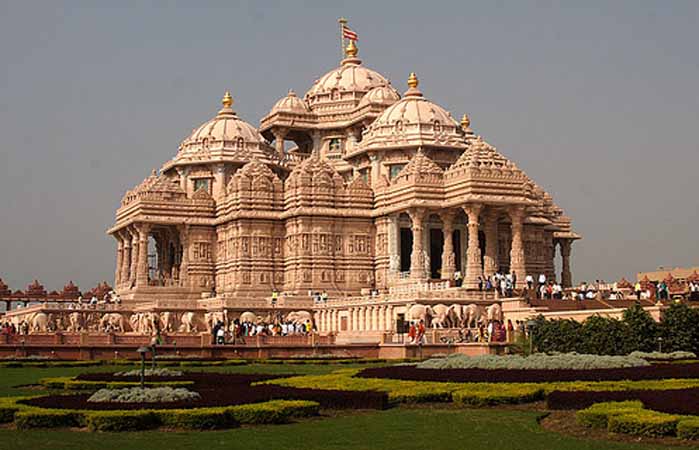
Famous Hindu Akshardham Temple in South Delhi

Famous Hindu Akshardham Temple in South Delhi
Indian architecture is that vast tapestry of production of the Indian Subcontinent that encompasses a multitude of expressions over space and time, transformed by the forces of history considered unique to the sub-continent, sometimes destroying, but most of the time absorbing. The result is an evolving range of architectural production that none the less retains a certain amount of continuity across history.
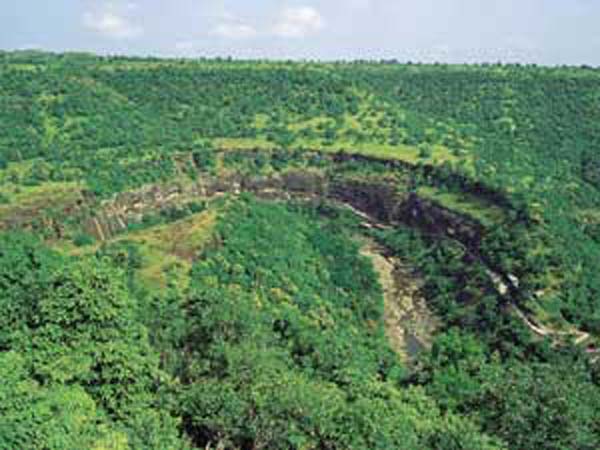
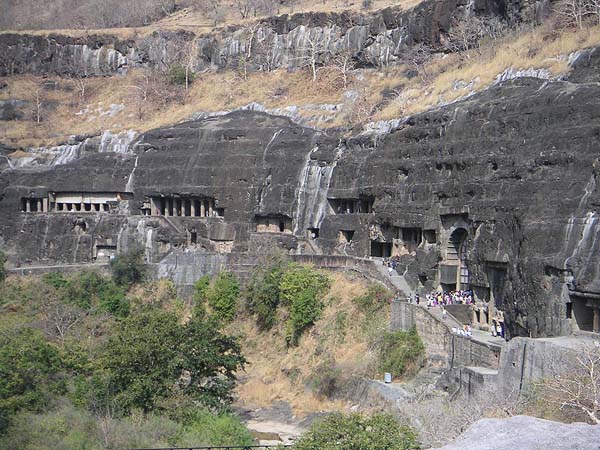
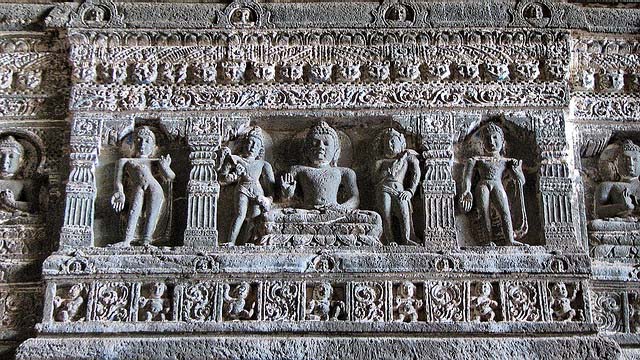
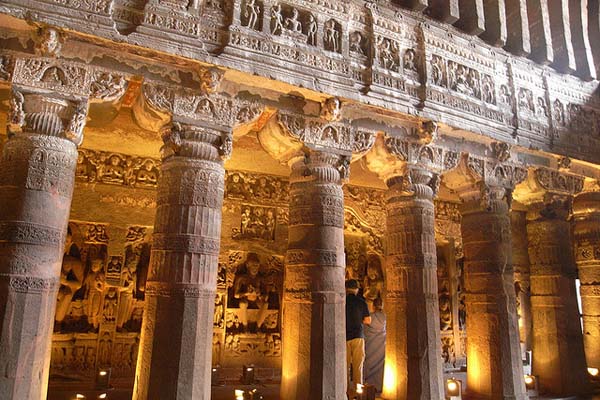
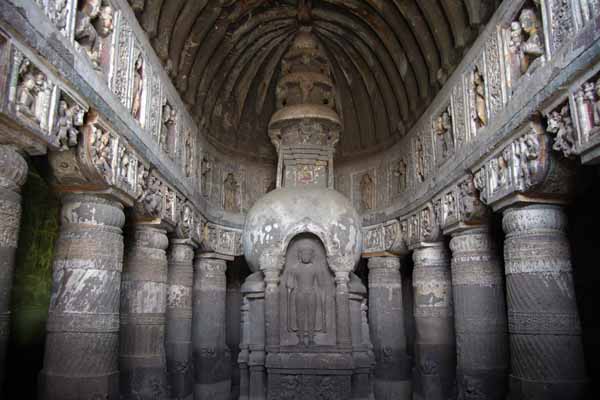

The Ajanta Caves in India are 29 rock-cut cave monuments which date from the 2nd century BCE. The caves include paintings and sculptures considered to be masterpieces of both Buddhist religious art (which depict the Jataka tales) as well as frescos which are reminiscent of the Sigiriya paintings in Sri Lanka. The caves were built in two phases starting around 200 BCE, with the second group of caves built around 600 CE.
Since 1983, the Ajanta Caves have been a UNESCO World Heritage Site. The caves are located in the Indian state of Maharashtra, near Jalgaon, just outside the village of Ajintha. Caves are only about 59 kilometers from Jalgaon Railway station (on Delhi - Mumbai, Rail line of the Central railways, India); and 104 kilometers from Aurangabad (from Ellora Caves 100 Kilometers).
The earliest production in the Indus Valley Civilization was characterized by well planned cities and houses where religion did not seem to play an active role. The presence of drainage systems and public baths showed advanced standards of hygiene and sanitation and ingenious planning. The Vedic village had certain distinct characteristics that influenced subsequent architectural production. The Vedic grama could have a pur, or a fort-like structure within it. The Vedic hymns speak of "purs" made of stone and metal.
The Vedas have many words for houses. It appears that the main distinction was between chardis (house with a thatched roof), harmyam (a house of brick and stone that had a courtyard in the middle), and gotra (a multi-dwelling complex with sheds for animals). The Rig-Veda speaks once of a palace with 1000 doors, and twice of a palace with 1000 columns.
Buddhism gained prominence during the reign of the emperor Ashoka. It is primarily represented by three important building types- the Chaitya Hall (place of worship), the Vihara (monastery) and the Stupa (hemispherical mound for worship/ memory)- exemplified by the magnificent caves of Ajanta and Ellora and the monumental Sanchi Stupa. The Greek influence led the Indian architecture of the time, especially the rock-cut art, to fall under one of the two categories: the Mathura school of art which was strictly Indian in spirit and did not adopt from the Greek styles, and the Gandharva school of art which incorporated influences of the Greek art. The division of Buddhism into Hinayana and Mahayana phases also influenced the nature of rock-cut art, the former being represented by artifacts used by the Buddha, and the latter by images of the Buddha. The Jaina temples are characterized by a richness of detail that can be seen in the Dilwara Temples in Mt. Abu.
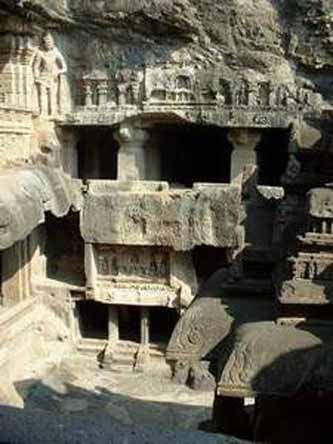
Ellora Cave Architecture
World Heritage Site
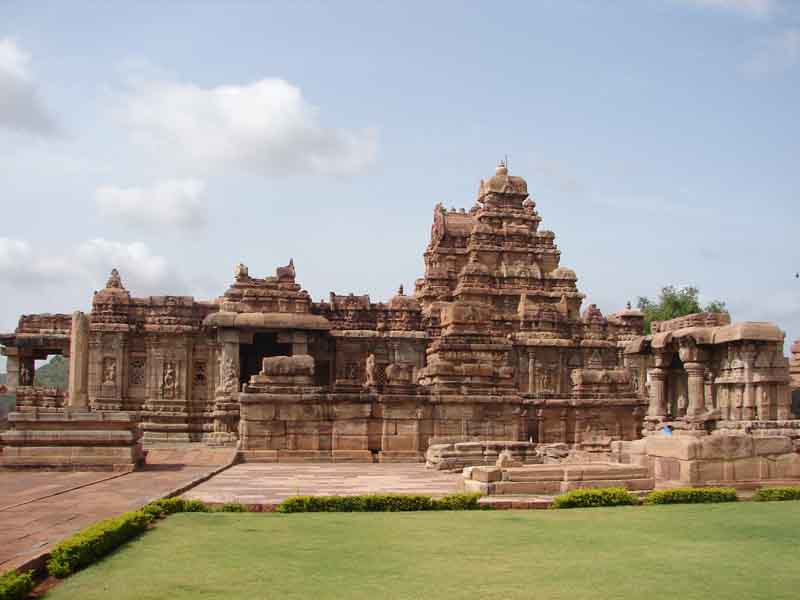
Virupaksha Temple, Pattadakal
The reference to temples in literature go back early with Panini (520 BC - 460 BC) and Patanjali mentioning temples which were called prasadas. Early beginnings of Hindu temple architecture have been traced to the remains at Aihole and Pattadakal in present day Karnataka, and have Vedic altars and late Vedic temples as described by Panini as models. Later, as more differentiation took place, the Dravidian/ Southern style and or the Indo-Aryan/ Northern/ Nagara style of temple architecture emerged as dominant modes, epitomized in productions such as the magnificent Brihadeeswara Temple, Thanjavur, and the Sun Temple, Konark. The older terminologies of Dravidian and Indo-Aryan are not used in current practice because of their racial and dubious origins. Buddhist elements and motifs have influenced temple architecture to a considerable extent.
Early temples were rock-cut, later structural temples evolved. The Kailasanatha temple at Ellora is a good example of the former, excavated from top to bottom out of a massive rock face.
The pyramid formed an essential architectonic element in any temple composition- stepped in the Dravidian style, stepped and slightly curved in the Northern style. The structural system was essentially trabeated and with stone being the basic raw material for the Indian craftsman, construction could be carried out with minimal or no mortar. Decoration was fundamental to Indian architecture and is seen in the myriad details of figured sculpture as well as in the architectural elements. The concept of fractals has been used to examine the form of the Hindu temple, both in terms of its planning and external appearance.
The garba-griha or the womb chamber forms the central focus housing the deity of the temple and is provided with a circumambulation passage around. However, there are also many subsidiary shrines within temple complexes, more particularly in the South Indian (the Dravidian style) temple. As the Hindu temple is not meant for congregational worship, the garba-griha is small in scale when compared to the whole temple complex. However, it is articulated externally by the vimana or the sikhara. Pillared halls or mandapas are found preceding the garba-griha.
The spatial experience of a South Indian temple complex is considered particularly rich and meaningful. In many of them, such as the Ranganathaswamy temple at Srirangam, the concentric enclosures or prakaras along with the series of gopurams or entrance gateways reducing in scale as they move towards the garbha-griha set up a rhythm of solids and voids as well as providing a ritual and visual axis.The principles of temple architecture were codified in treatises and canons such as Manasara, Mayamatam, and Vaastu Shastra. These offered an ordering framework yet allowed a certain latitude for contextual articulation.
Today most of the ancient Hindu architecture thrives in temples of south India and south-east Asia as the subsequent forces of Islam transformed the cultural landscape of India more dominantly in the north.
With the advent of Islam, the erstwhile Indian architecture was slightly adapted to allow the traditions of the new religion, but it remained strongly Indian at its heart and character. Arches and domes began to be used and the mosque or masjid too began to form part of the landscape, adding to a new experience in form and space. The sahn or the open courtyard for congregational worship with the enclosing cloisters or liwans and the sanctuary at the Western end offered a different architectural vocabulary. The fundamental difference lay in the fact that Islam prohibited idol worship and therefore a concentrated point of focus such as the garba-griha was unnecessary. However, the mihrab on the Western wall of the sanctuary articulating the Qibla or the direction towards Mecca offered a notional focus. As idolatory was prohibited, the main means of adornment was surface decoration through the use of geometry, arabesque and calligraphy. Later, mosques began to be built with original material. The Jami masjid at Delhi is a representative example of an Indian mosque. Islamic architecture was also represented by distinct regional styles that drew a lot of inspiration from the local context.
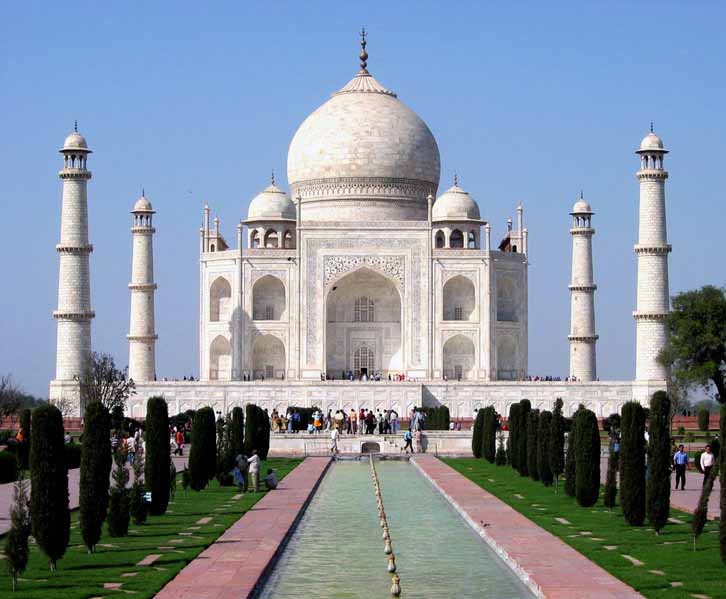
The most famous Islamic buildings in India emerged during the Mughal period. Mughal architecture built on the traditional Hindu architecture with influences from the Persian world. Over time, Hindu and Islamic architecture produced a synthesis that is exemplified in the glorious production of Akbar- the city of Fatehpur Sikri, considered by many to be superior to the Taj Mahal (often seen as representing India) in terms of what it has to teach to civilisation- syncretism, tolerance and the best of different worlds, and the Taj itself, renowned for its beauty in white marble, its intricate engravings, its minarets and its setting.
The most popular Islamic building type in India is the tomb or the mausoleum which evolved from the basic cube and hemisphere vocabulary of the early phase into a more elaborate form during the Mughal period where multiple chambers are present and tombs were set in a garden known as the char-bagh. The tomb chamber houses the cenotaph below which is the grave. Well known examples are the Gol Gumbaz, Bijapur and the Taj Mahal, Agra.
The colonial attention towards Indian architecture was mainly focused towards religious buildings and hence there is much scholarship in this area. In recent times, the secular production of India is gaining the attention it merits. Cities of the desert region in the North such as Jaisalmer, Jodhpur, towns such as Srirangam in Tamil Nadu evolving around the temple as nucleus, the stepped wells of Gujarat, the vernacular architecture of the warm, humid area of Kerala- all these are unique in their response to socio-cultural and geographic context.
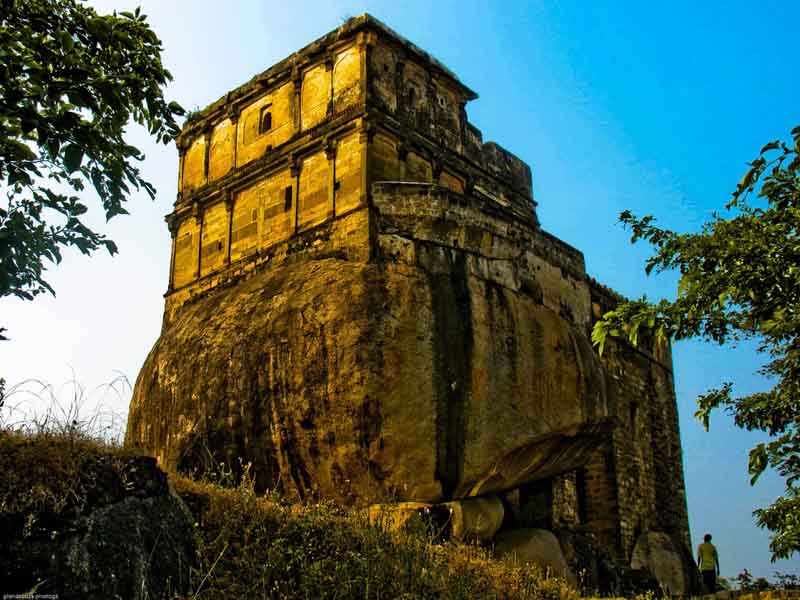
With colonization, a new chapter began. Though the Dutch, Portuguese and the French made substantial forays, it was the English who had a lasting impact.
The architecture of the colonial period varied from the beginning attempts at creating authority through classical prototypes to the later approach of producing a supposedly more responsive image through what is now termed Indo-Saracenic architecture- a mixture of Hindu, Islamic and Western elements. Institutional, civic and utilitarian buildings such as post offices,railway stations, etc., began to be built in large numbers over the whole empire. Perhaps the most famous example is the Chhatrapati Shivaji Terminus (CST) in Mumbai, originally named in honor of Queen Victoria. The creation of New Delhi in early 20th century with its broad tree lined roads and majestic buildings generated lots of debate on what should be an appropriate architecture for India.
With the introduction of Modern Architecture into India and later with Independence, the quest was more towards progress as a paradigm fuelled by Nehruvian visions. The planning of Chandigarh- a city most architects hate/love- by Le Corbusier was considered a step towards this. Later as modernism exhausted itself in the West and new directions were sought for, in India too there was a search for a more meaningful architecture rooted in the Indian context. This direction called Critical Regionalism is exemplified in the works of architects such as B.V. Doshi, Charles Correa, etc.,
Indian architecture as it stands today is a pluralistic body of production that cannot in all justice be exemplified by the approaches, buildings and architects cited above.It has evolved over the centuries and has been affected by numerous invaders aho have brought different styles from their motherlands.But it is an unavoidable fact that certain expressions tend to get magnified and others reduced when set against the vast canvas of the world. In that sense, there is a distillation to an essence that does not have all the ingredients. A more representative selection can occur only at a deeper level of study.
Monuments in India classified under World Heritage Sites
Mughal Architecture
Hindu Temple Architecture
Buddhist Architecture
Indo-Saracenic Architecture
Hoysala Architecture
Indo-Islamic Architecture